HP EliteBook 8760w: Color, So Dreamy
by Dustin Sklavos on August 25, 2011 2:30 AM ESTApplication and Futuremark Performance
It's important to stress in our Futuremark testing that the HP EliteBook 8760w benefits from a last-generation SSD; it may only be running at SATA 3Gbps, but it's still fast. Jarred wrote a pretty decent breakdown of PCMark and PCMark 7 in particular in his review of the Clevo W150HR and I wholeheartedly agree with his observations and conclusions. As for 3DMark, try to remember that though we tested the 8760w in gaming situations it is fundamentally a workstation and thus not intended for you to pwn n00bs at Call of Duty 185: America Mindlessly Pads Bobby Kotick's Bank Account.
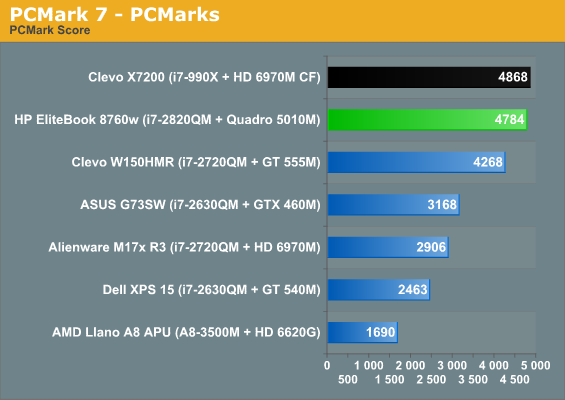
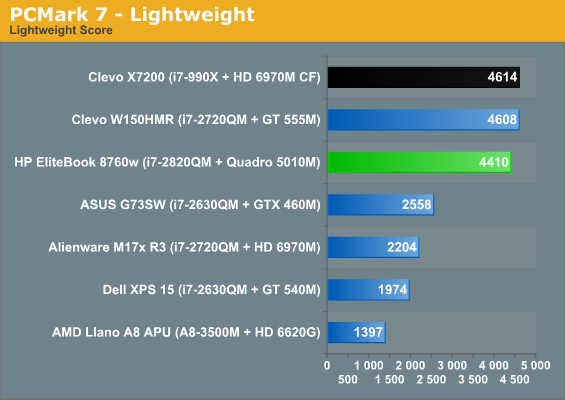
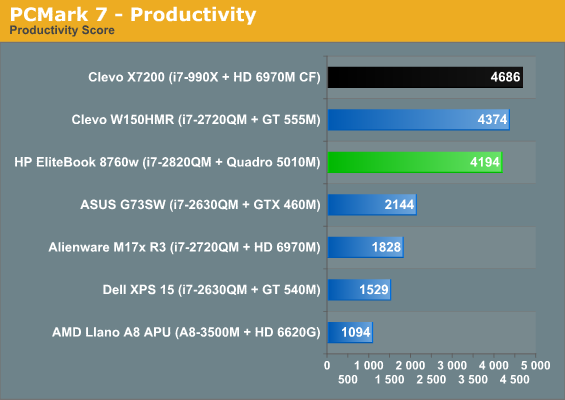


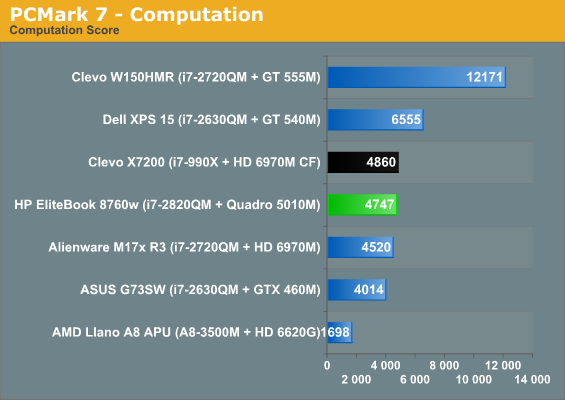
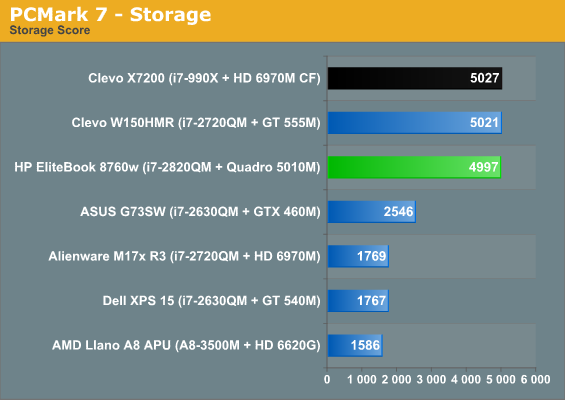
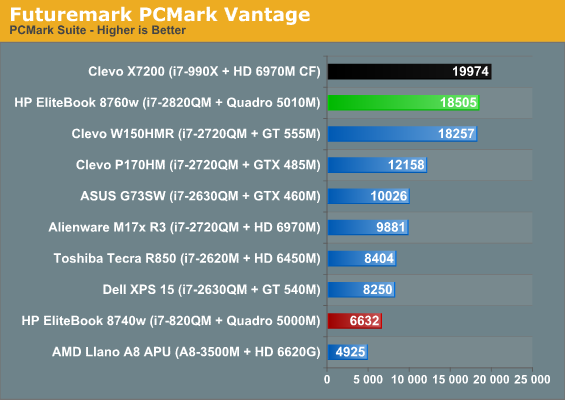
PCMark Vantage and PCMark 7's overall score place the 8760w pretty much exactly where it needs to be, though it's impressive how much it nips the heels of the beefy Clevo X7200 with its hex-core processor and CrossFire graphics solution. Not just that, but it's substantially faster than its predecessor.
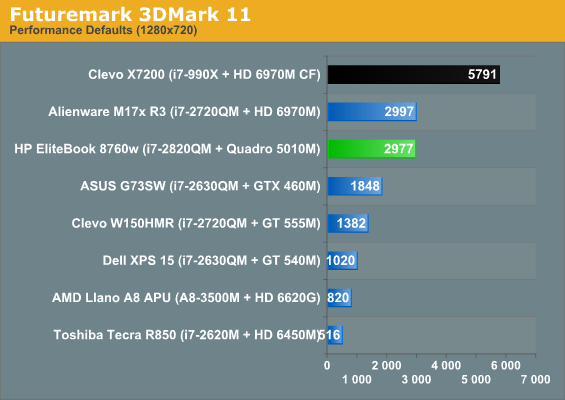
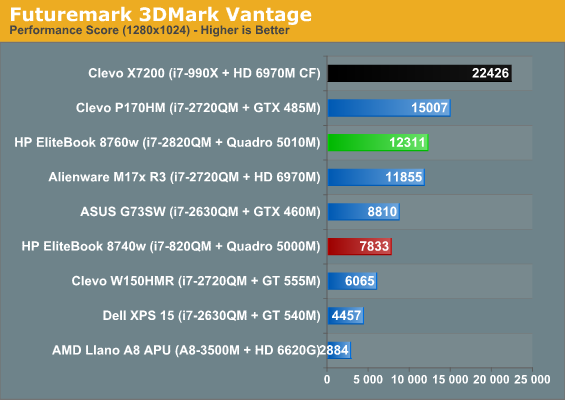
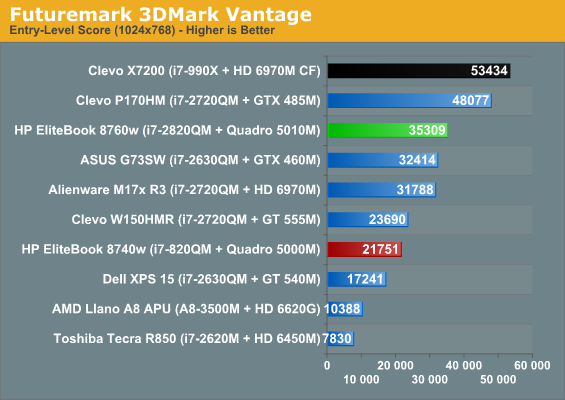
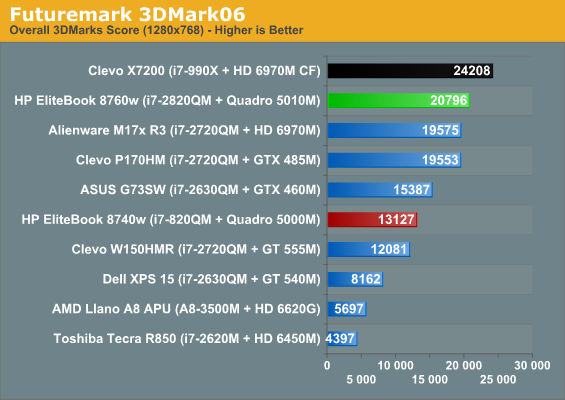
When we get into the 3DMarks, we immediately see major benefits from the additional 64 CUDA cores along with the higher clocks on the NVIDIA Quadro 5010M. That said, we can also see where the increased texturing throughput (64 TMUs in the GTX 485M vs. the 48 in the 5010M) and substantially higher clocks of the GTX 485M make it a far more preferable gaming solution. The 5010M is no slouch, but it's more of a workhorse than anything.
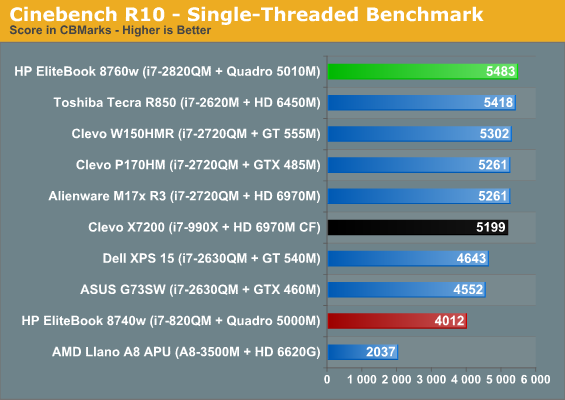
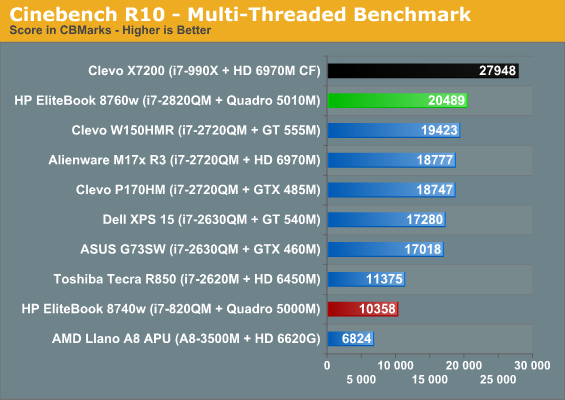
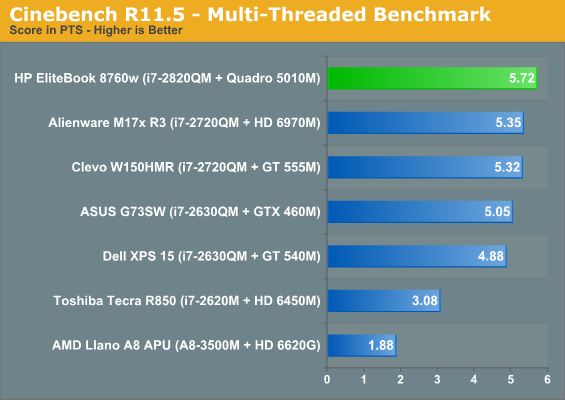
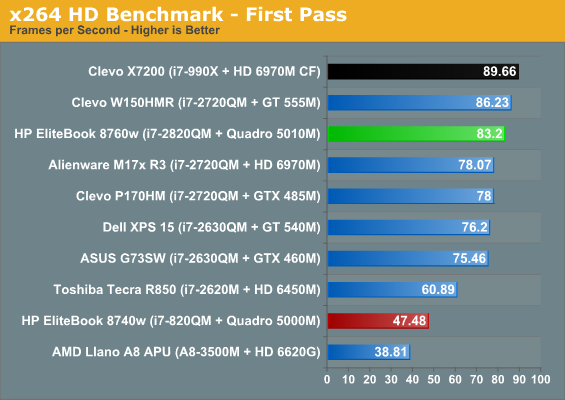
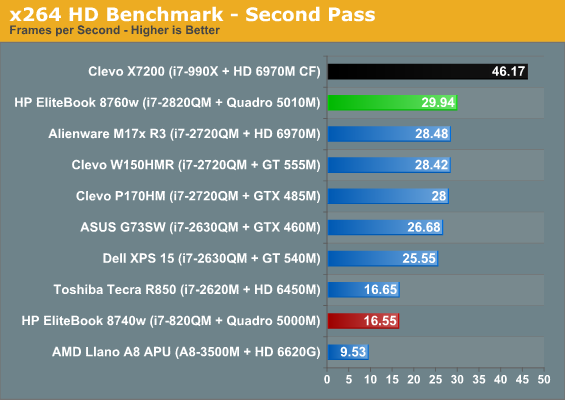
While dual-core processors got a healthy bump in performance in the jump to Sandy Bridge, it's the quad-cores that made out like bandits. In processor-intensive tasks the Intel Core i7-2820QM is often nearly twice as fast as the i7-820QM in last generation's 8740w, making the older notebook a very hard sell. Only the hex-core desktop i7-990X in Clevo's beastly X7200 is consistently faster.










83 Comments
View All Comments
damianrobertjones - Thursday, August 25, 2011 - link
In the future could you actually make a point of informing users about the fan (A bit more info)? Does it stay on all the time? Does it switch off as this is one of the more important aspects.For instance I've had a chance to use the following new models: (Fitted SSD, clean install, tweaked)
HP 5330m - core i3, fan off most of the time
HP 6460b - core i5, fan always on and annoying
HP 8460p - core i5, fan always on and annoying
Dell Vostro v131, celeron, fan ALWAYS off!
Also here are the extended battery options that you missed off:
HP VH08XL
HP ST09 - Extended life battery (Fits under the laptop)
HP BB09 - Ultra extended life battery (Massive slice, fits under the laptop)
The BB09 along with the standard battery on a 6460b will play full screen media non-stop for 14+ hours (Wireless off, lowest brightness, audio via headphones).
Thanks
nirolf - Thursday, August 25, 2011 - link
+1, more info on the noise would be nice.B3an - Thursday, August 25, 2011 - link
Same. More fan info please.wawawiwa - Thursday, August 25, 2011 - link
In my experience, the fan starts spinning on high usage like rendering or hd editing. It spins sometimes in photoshop but for short periods while in illustrator it stays off all the time (cs5.5). It also spins up but on lower rpm when i'm using both external and laptop display and it stays on all the time. If I'm using "projector" only or the laptop display only, it stays off.Standard temperature (CPU) is around 45°C, the maximum I got it to go is up to 80°C but still the keyboard and the part around the power button never gets hot, just warm.
It is a beast.
heymrdj - Thursday, August 25, 2011 - link
These are high end workstation systems. Like any user, one must make a tradeoff between power and cooling. You can't run dual 6990's without fan noise, be it a watercooling radiator setup or fans, you *have* to pay the price for power in fan noise and/or size. The only way to get fan noise lowered is to thicken the fan and thicken the unit itself. Using workstation systems myself fan noise is a non issue, I know it will be loud according to the chips I outfit it with. A high end I7 and an always on quadro GPU is going to be producing a good deal of heat even idling, no way around it, just as my 5.4L V8 in my Expedition costs more to idle in fuel and heat than the 2.3L I4 in my fiance's Ranger.damianrobertjones - Thursday, August 25, 2011 - link
I'm aware of this. The entire new Elitebook and Probook range are thicker than nearly any laptop I've used in the last 5 years YET the fan is always on even after updating the bios which enabled the 'fan' option. That said same option no longer even does what we think it does.I'd expect the 8760w to have fans the size of a small room :) but it would be nice to know if it EVER switches off
Barfo - Thursday, August 25, 2011 - link
yesvelis - Thursday, August 25, 2011 - link
I too bought an 8740w just for the x1200 dreamcolor. Had it been 1080p I wouldn't have bothered. I sure hope this notebook lasts me until monitors finally start picking up resolution. This convergence to 1080p and nothing higher gives me the creeps. Thanks for pointing out that fact in this review.Oh what I wouldn't give for a nice 24" 2560x1600 standalone - which would be the exact monitor obtained from this same dreamcolor 17" glass (the 1200p one of course)...
I saw that HP offers a dreamcolor standalone, but its resolution is a useless 1920 and the price is stupenduously prohibitive. Why can the upgrade on a notebook cost $500 ($600 now), but a standalone costs >$2500???
Rick83 - Thursday, August 25, 2011 - link
Well, mostly because the upgrade also includes the price of the base display (probably around 150-200$) and because you get much better back-lighting for desktop screens.Additionally, size does matter, there's a bunch more material costs, more/better control circuits, a power supply, a foot, and finally dream color is just a brand - so the panel is probably utterly dissimilar from that used in the desktop.
Also, the desktop screen market is a much more competitive market, as you can plug any screen into any computer - with the laptop you're limited to the options your producer gives you.
If you compare the dream color offering to NEC and eizo offerings, you will see that it is priced for a certain market.
It would be interesting to see direct performance comparisons between high end IPS laptop panels and mid-end PVA/IPS desktop screens, to see just how good/bad these high-end laptop screens are, and whether they're worth the extra 600$, if you mostly use the machine at a desk, or if the same money buys a vastly superior dedicated screen.
Dustin Sklavos - Thursday, August 25, 2011 - link
I have to be honest, I think the screen quality (at least subjectively) is at LEAST on par with my desktop HP ZR24w and LP2465, if not outright better.